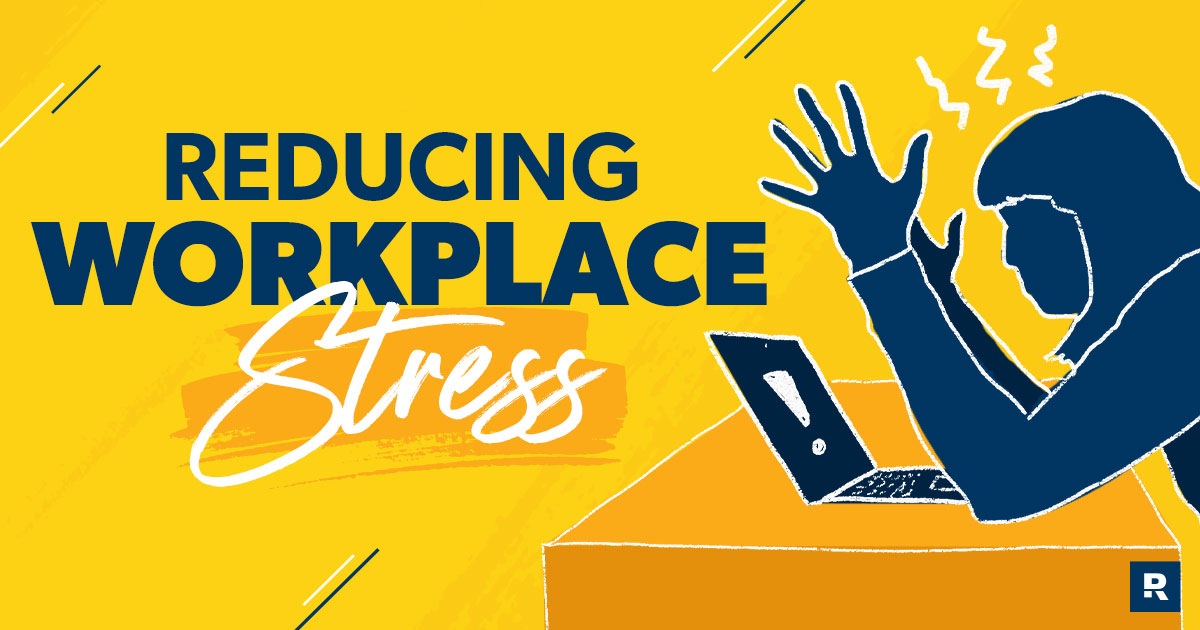
As an employer, you want your team members healthy, happy and full of passion for what they do. It’s the best way for them to work at their optimum levels and for everyone to win. Unfortunately, for more than one-quarter of American workers, satisfaction at work is anything but a reality.
In a recent poll by the American Psychological Association, one-third of Americans are living with extreme stress, and the primary source of that anxiety was their job. In fact, workplace stress has become so prevalent in this age of layoffs and long work hours that this psychological condition has been nicknamed the Black Death of the 21st century.
Okay, maybe the people who work in the office of official nicknames are a bit overdramatic, but nonetheless, stress can be dangerous. It’s been linked to:
-
Cardiovascular disease
-
Depression
-
Burnout
-
Workplace injury
-
Back problems
All of the above complications lead to absenteeism, turnover, decreased productivity and increased medical, legal and insurance expenses. That, in turn, stresses you out!
You probably thought running a business sounded fun—until you realized it would actually run you. Discover the EntreLeadership System—the small-business road map that takes the guesswork out of growth.
The good news is that you can lower the level of anxiety for your team members and yourself. There are a number of ways to keep your team members far from freak-out mode. Here are a few to get you started:
1. The Right Fit
Have you ever been in a job where you just weren’t suited but tried to make it work anyway? It’s miserable and nerve-wracking. The same holds true for your team members. If they’re not the perfect fit for a position, they’re going to dread coming to work. The end result will be that they won’t stick around long, whether it’s their decision or yours. The key is to make sure you have the right person on the right bus in the right seat. It allows you both to do your best work.
2. Your Team Matters
Demonstrate a commitment to the needs of others. That’s an easy one to understand as far as your family, friends and customers go. But do you apply this principle to your own team members? Are you doing what’s best for them? Treat your team well, and they will return the favor.
3. Financial Wellness
Personal financial problems are a leading cause of stress for your team members. In fact, it’s the number-one reason workers lose focus and become less productive. Those who are in financial trouble spend up to 20 hours a month worrying about their problems while on the job.
An additional way to decrease money worries is by offering a financial wellness benefit. The program should teach your team members to take control of their money and make it work for them, eliminating financial stress.
4. Communication
You know the old saying, “No news is good news”? It’s awesome if you want to build a culture of distrust and frustration. In fact, according to a Deloitte’s 2010 Ethics and Workplace poll, 46% of those surveyed cited a lack of transparent communication from their leadership as the main reason for dissatisfaction at work.
Communication is the lifeblood of an organization and the grease that keeps the gears moving. Everyone feels better when they know what’s happening. Make a habit of oversharing with your team members, whether it’s good news or bad. When they know what’s going on and what’s being accomplished, they’ll feel like part of the team and trust their leaders.
5. Recognize Them
People, no matter how young or old, yearn for recognition. Telling someone they are doing a good job can instantly put a smile on their face. Look for opportunities to brag on your people. Do it in front of others, especially those they care about, and it’s three times as powerful. A word of warning, though: Your compliment has to be sincere. Cheap flattery will get you nowhere. In fact, it demotivates instead of inspires.
Making your company an awesome place to work, where stress is low and motivation is high, creates an atmosphere of winning for your team and the business. Then you can kiss that plague of stress goodbye.


